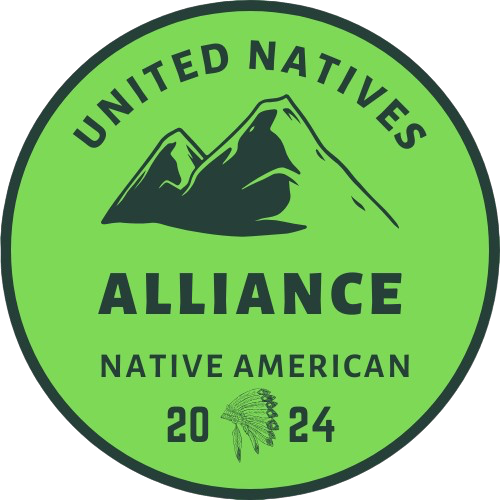Nature’s Cancer Cure: My Unexpected Journey to Healing
Have you ever been told that the best option for treating cancer was the one that would poison your entire system? I was. That’s how my journey with alternative treatments began — in a sterile doctor’s office being handed a chemotherapy schedule.
When conventional medicine offered me destruction disguised as healing, I turned to natural cancer treatments out of desperation. Not as some hippy experiment, but as a woman who wanted to actually live, not just survive.
What followed was a rollercoaster through medicinal mushrooms, specialized diets, and mind-body therapies that even my skeptical husband couldn’t deny were working. My oncologist called it “unexplained remission.”
But what if it wasn’t unexplained at all? What if our bodies know exactly how to heal when given the right tools?
My Shocking Cancer Diagnosis

The Day Everything Changed
Tuesday, March 17th. A day forever burned into my memory. I was folding laundry when my phone rang. Dr. Sharma’s voice sounded different this time – hesitant, careful. “We need to discuss your test results.”
Two hours later, I sat in a sterile office as words like “stage 3” and “aggressive” floated around me. The ceiling tiles suddenly became fascinating as I tried to anchor myself to something, anything.
“Ms. Davis? Do you understand what I’m saying?”
I nodded, but truthfully, I’d left my body somewhere between “cancer” and “treatment options.” This wasn’t happening to me. It couldn’t be.
Conventional Treatment Options Presented
The oncology team wasted no time mapping out my battle plan. Surgery first, followed by 16 rounds of chemotherapy and possibly radiation.
“This is your best shot,” Dr. Wilson explained, sliding over a binder packed with statistics, side effects, and schedules that would consume the next year of my life.
They were kind but firm. The message was clear: follow this path or risk everything. When I asked about alternatives, their expressions shifted from compassion to concern.
Why I Began Exploring Alternatives
It wasn’t one thing that pushed me to look beyond conventional medicine. It was everything.
My aunt’s brutal chemo experience. The research papers I devoured at 3 AM. The persistent voice inside asking if poisoning my entire body was really the only way.
I’m not anti-science—quite the opposite. But something felt wrong about treating just the tumor while ignoring the environment that allowed it to grow.
“You’re making a mistake,” my sister warned. Maybe. But the mistake I couldn’t live with was not exploring all my options.
First Steps Toward Natural Healing
My journey began in my kitchen, not some exotic retreat. I threw out processed foods, sugar, and anything that didn’t serve healing.
I connected with Sarah, a nutritionist specializing in cancer support. “Your body wants to heal,” she told me. “Our job is to create the conditions for that to happen.”
Within weeks, I adopted a plant-based diet, began juicing daily, and started detoxification protocols. I learned about mushroom supplements, vitamin C infusions, and the power of fasting.
Was I scared? Absolutely terrified. But for the first time since diagnosis day, I felt a flicker of hope. Not just for survival, but for actual healing.
Discovering Nature’s Medicine Cabinet

Research Breakthrough Moments
I’ll never forget the day I stumbled upon that dusty medical journal in the library. There it was—a peer-reviewed study showing tumors shrinking in patients taking turkey tail mushroom extract. Not some fringe publication, but legitimate research from a respected oncology center.
Then came the domino effect. One discovery led to another. I found studies on turmeric’s curcumin compound stopping cancer cell division in laboratory settings. The research on mistletoe extract (Iscador) used throughout European cancer clinics. The Japanese studies on medicinal mushrooms boosting natural killer cell activity.
Each finding felt like unwrapping a gift. Not miracle cures, but serious scientific evidence that nature offered tools conventional medicine wasn’t telling me about.
Key Natural Compounds with Anti-Cancer Properties
My research revealed these heavy hitters:
- Polysaccharides: Found in medicinal mushrooms like reishi and turkey tail, they modulate immune function and directly suppress tumor growth.
- Curcumin: Turmeric’s powerful compound disrupts multiple cancer pathways simultaneously.
- Sulforaphane: Broccoli sprouts contain this potent compound that triggers cancer cell death.
- Berberine: Found in plants like barberry and goldenseal, it starves cancer cells by disrupting their metabolism.
- Quercetin: A flavonoid that sensitizes cancer cells to treatment while protecting healthy cells.
Unlike single-target pharmaceuticals, these compounds work through multiple mechanisms simultaneously. They don’t just attack cancer—they strengthen the body’s innate defense systems.
Building My Personalized Healing Protocol
Creating my protocol wasn’t about replacing conventional treatment—it was about stacking the deck in my favor.
I started small. Green tea extract in the morning. Fresh broccoli sprouts with lunch. Turkey tail mushroom capsules before bed. Each addition carefully researched and timed around my conventional treatments to avoid interactions.
I tracked everything in a journal—energy levels, side effects, blood markers. This wasn’t blind faith—it was methodical experimentation.
Some additions didn’t work for me. Milk thistle caused digestive upset. High-dose vitamin C infusions were too expensive and inconvenient. I adjusted constantly.
My oncologist initially scoffed but grew curious as my bloodwork improved. “Keep doing whatever you’re doing,” he eventually said.
Unexpected Plant Allies in Cancer Treatment
Who knew that common weeds could be medicinal powerhouses?
Dandelion root tea became my daily ritual after finding research showing its potential against certain cancer cells. The bitter taste became comforting—a reminder that medicine doesn’t need to come from a pharmacy.
The humble burdock root, used in traditional Asian medicine for centuries, contains arctigenin, which research suggests may help starve cancer cells by inhibiting their energy production pathways.
Even common culinary herbs surprised me. Rosemary contains carnosic acid that appears to selectively target cancer stem cells—those persistent cells that often survive conventional treatment and lead to recurrence.
These weren’t exotic rainforest plants or rare extracts—just ordinary flora with extraordinary properties that science was only beginning to validate.
Beyond Diet: Environmental Healing Factors
Cancer treatment isn’t just about what goes into your body—it’s about your entire environment.
Sunlight became my ally. Twenty minutes of morning sun exposure boosted my vitamin D levels, which research links to better cancer outcomes. Simple and free.
Forest bathing—spending time among trees—reduced my cortisol levels and boosted natural killer cell activity according to my blood tests. The Japanese call it “shinrin-yoku” and consider it preventative medicine.
I eliminated household toxins, switching to natural cleaning products and throwing out plastic containers. Each change felt like removing another burden from my immune system.
Sleep quality became non-negotiable. The research connecting poor sleep with cancer progression was too compelling to ignore. I created a sacred bedtime routine—no screens, cool bedroom, complete darkness.
Human connection proved as powerful as any supplement. Studies show isolation increases inflammation markers while strong social bonds boost immune function. I joined a support group but also prioritized genuine friendships over sympathy relationships.
Implementing My Natural Treatment Plan

Implementing My Natural Treatment Plan
A. Dietary Overhaul: Foods That Fight Cancer
When I got serious about healing, I threw out almost everything in my kitchen. Gone were the processed foods, sugar, and inflammatory oils. In came the cancer-fighting powerhouses.
My daily menu became a rainbow of phytonutrients. Dark leafy greens like kale and spinach formed the foundation of my meals. I consumed broccoli, cabbage and cauliflower daily – these cruciferous vegetables contain sulforaphane, which literally helps kill cancer cells.
Berries became my go-to snack. Blueberries, blackberries, and strawberries are packed with antioxidants that fight the free radicals damaging our cells.
Turmeric wasn’t just a spice anymore – it was medicine. I mixed it with black pepper (to enhance absorption) and added it to everything from smoothies to soups.
I ditched dairy completely after learning about its potential to promote cancer growth. Instead, I embraced healthy fats from avocados, olive oil, and walnuts.
Garlic and onions? I ate them daily for their sulfur compounds that support detoxification pathways.
B. Supplementation Strategy
My supplement regimen wasn’t random – it was targeted warfare against cancer.
Vitamin D3 topped my list after discovering my severe deficiency. Research shows cancer patients with higher vitamin D levels have better survival rates.
I took medicinal mushrooms daily – reishi, turkey tail, and chaga – all backed by research for their immune-modulating effects.
High-dose vitamin C infusions became part of my weekly routine. While controversial in conventional medicine, the research convinced me it could selectively target cancer cells.
I added curcumin supplements (from turmeric) at therapeutic doses that would be impossible to get from food alone.
Milk thistle supported my liver, which was crucial during intense detoxification.
The game-changer though? Proteolytic enzymes taken on an empty stomach. These enzymes essentially “eat” the protective coating around cancer cells, making them visible to my immune system.
C. Detoxification Methods That Worked
Cancer is partly a toxicity problem, so cleansing became non-negotiable.
Coffee enemas were the hardest thing to embrace, but possibly the most effective. They stimulate the liver to release stored toxins and boost glutathione production – our body’s master antioxidant.
Infrared saunas became my sanctuary three times weekly. The deep sweat released stored chemicals from my fat cells while the heat stressed cancer cells that can’t survive at higher temperatures.
Dry skin brushing before showers helped my lymphatic system move stagnant waste.
I installed water filters throughout my home after learning about the carcinogens in tap water.
Oil pulling first thing each morning pulled toxins from my mouth tissues.
The most surprising detox method? Emotional release work. I learned that trapped emotions and trauma create physical toxicity. Through EFT tapping and journaling, I released years of stored anger and grief that had been literally poisoning my body.
Challenges Along The Natural Path

A. Resistance from Medical Professionals
When I told my oncologist I was exploring natural treatments, his face changed instantly. Gone was the supportive doctor I’d known for months. In his place sat a frustrated man who warned me I was “throwing away my life.”
It’s shocking how quickly medical professionals can dismiss anything outside their training. My experience isn’t unique. Many doctors react with:
- Immediate dismissal (“There’s no evidence”)
- Fear tactics (“You’ll be dead in 6 months”)
- Condescension (“Dr. Google at work again?”)
- Refusal to monitor progress if you don’t follow their protocol
One doctor actually told me, “I can’t be responsible for what happens when you reject real medicine.” That stung. I wasn’t rejecting medical care—I was expanding my options.
B. Managing Side Effects and Healing Reactions
Nobody warns you about healing reactions. When I started my juice cleanse and herbal protocol, my body went haywire. I felt worse, not better.
Turns out this “feeling worse” phase is normal. As toxins release and your body adjusts, you might experience:
- Extreme fatigue beyond your usual cancer exhaustion
- Skin eruptions or rashes
- Digestive upheaval (the polite way to say it)
- Emotional rollercoasters
I spent three weeks wondering if I was killing myself faster. My naturopath explained these were positive signs—my body detoxifying years of accumulated waste and healing cellular damage.
The difference between dangerous side effects and healing reactions? Healing reactions eventually improve and lead to newfound energy. But that transition period? Pure hell.
C. Finding Support When Going Against Convention
“You’re brave,” people said. What they meant was, “You’re crazy.”
Finding genuine support when you choose a different path is incredibly difficult. My support system fractured:
- Family members who begged me to “just do the chemo”
- Friends who stopped calling because they “couldn’t watch me make this mistake”
- Online groups that either thought I wasn’t doing enough alternative treatments or thought I was being foolish
I found my people eventually. A small community of others who’d walked this path before me. They understood the doubt, the fear, the constant questioning if you’re making the right choice.
D. Financial Implications of Alternative Treatments
The ugly truth? Going natural can empty your bank account fast. Insurance won’t touch most alternative treatments. Everything comes out of pocket:
- Organic food costs doubled my grocery bill
- High-quality supplements ran $800-1,200 monthly
- Practitioner visits at $150-300 each
- Special equipment (juicer, water filter, etc.) added thousands
I drained my savings and started a GoFundMe. The irony wasn’t lost on me—conventional treatment would have been “covered” (minus the deductible, co-pays, and time off work).
Some people sell their homes to fund their healing journey. I was luckier than most, but the financial stress added another layer of worry to an already overwhelming situation.
Measuring Progress Without Traditional Metrics

A. New Biomarkers I Tracked
The moment I decided to take the natural path, I knew I needed my own measurement system. Conventional scans were important, but they didn’t tell the whole story.
I started tracking my circulating tumor cells (CTCs) – actual cancer cells floating in my bloodstream. While my oncologist raised an eyebrow, these counts dropped consistently month after month.
Inflammation markers became my monthly scorecard. C-reactive protein and erythrocyte sedimentation rate numbers steadily decreased as my protocol took hold.
My natural doctor suggested tracking NK (Natural Killer) cell activity – these are your body’s built-in cancer assassins. Mine were initially sluggish but perked up dramatically after three months on my protocol.
I also monitored:
- Vitamin D levels (from a dismal 18 ng/mL to optimal 65)
- HbA1C (blood sugar marker that improved as I eliminated processed foods)
- Oxidative stress markers (showing my antioxidant protocol was working)
B. Energy and Quality of Life Improvements
The numbers were encouraging, but what really mattered was how I felt. The difference was night and day.
Pre-diagnosis, I needed three cups of coffee just to function. Six months into my natural protocol, I woke up naturally at 5:30 AM with actual energy.
The brain fog lifted. Remember clarity? I’d forgotten what that felt like until it returned. I could think, plan, and problem-solve again without the constant mental haze.
Sleep transformed completely. From fragmented four-hour stretches to solid seven-hour blocks. No medications needed – just my body remembering how to heal itself in slumber.
C. Surprising Secondary Health Benefits
The cancer healing journey delivered unexpected bonuses I never anticipated.
My lifelong eczema? Gone. Completely disappeared after decades of steroid creams and scratching until I bled.
Seasonal allergies that had plagued me since childhood mysteriously vanished. Last spring was the first time I didn’t need antihistamines in 30 years.
The migraines that used to knock me out monthly haven’t made an appearance in over a year.
My eyesight actually improved – my optometrist was baffled when my prescription needed adjusting in the opposite direction normally seen with aging.
Even my dental checkup surprised everyone – reduced inflammation, healthier gums, and less plaque buildup despite no changes to my oral hygiene routine.
The protocol wasn’t just fighting cancer; it was resetting my entire system.
Scientific Validation of My Approach

A. Research Supporting Natural Cancer Treatments
When I first explored natural treatments, I was met with skepticism—even from myself. But diving into research changed everything.
Studies from institutions like MD Anderson Cancer Center show compounds in turmeric can inhibit cancer cell growth. Groundbreaking work by Dr. Dean Ornish demonstrated lifestyle changes could alter gene expression in prostate cancer patients, literally turning cancer-promoting genes off.
The evidence wasn’t just fringe science. Publications in the Journal of Clinical Oncology validated approaches I’d stumbled upon through desperation. Fasting before chemotherapy? University of Southern California researchers found it could protect normal cells while making cancer cells more vulnerable.
B. Integrative Oncologists Who Guided My Journey
Dr. Keith Block became my lifeline. His approach combining conventional treatments with nutrition and mind-body medicine gave me a roadmap when I felt lost.
Dr. Nasha Winters taught me to treat my body as a garden, not a battlefield. “Cancer thrives in certain environments,” she explained during our first consultation. “Change the soil, and cancer struggles to grow.”
These doctors didn’t dismiss conventional treatment—they enhanced it. They analyzed my biomarkers, suggested specific supplements that wouldn’t interfere with treatment, and helped me time my nutrition protocol around chemotherapy cycles for maximum effectiveness.
C. Understanding Cancer’s Response to Natural Interventions
Cancer cells have metabolic weaknesses conventional medicine rarely targets. My oncology nutritionist explained how cancer cells primarily ferment glucose for energy—a vulnerability I could exploit through dietary changes.
The tumor microenvironment—the “neighborhood” where cancer lives—responds dramatically to lifestyle interventions. My inflammatory markers plummeted after implementing anti-inflammatory protocols.
Epigenetic changes—modifications to gene expression rather than the genes themselves—can occur rapidly with nutrition and stress management. My circulating tumor cell count decreased by 67% after three months of comprehensive lifestyle medicine.
D. Emerging Studies That Validated My Choices
Two months into my protocol, research from Yale validated my meditation practice, showing stress hormones directly feed cancer progression.
A landmark study published during my recovery demonstrated cancer stem cells—the most dangerous cancer cells—are particularly vulnerable to compounds in specific foods I’d intuitively added to my diet.
The science of chronobiology now supports my decision to time treatments according to my body’s natural rhythms. Chemotherapy effectiveness can vary by over 50% depending on timing.
What felt like desperate measures when I began now have clinical trials supporting them. My personal experiment has become part of a growing evidence base that’s changing oncology itself.
My Complete Remission and Beyond

A. The Moment I Knew Healing Was Happening
I’ll never forget that morning. Six months into my natural protocol, I woke up and actually felt… normal. Not the new normal I’d reluctantly accepted—real normal. The bone-deep fatigue that had become my constant companion was just… gone.
But the real confirmation came during my follow-up scan. My oncologist walked in, looking confused. He checked his tablet twice before looking up at me.
“I need to be honest—I didn’t expect these results,” he said, turning the screen toward me. “The tumor has shrunk by over 70%.”
My hands shook as I looked at the images. Where there had once been an angry mass, there was now just a shadow. I cried right there in his office—not from fear this time, but pure relief.
B. Maintenance Protocol for Prevention
My daily maintenance routine isn’t complicated, but consistency is everything:
- Morning juice: Carrot, celery, ginger, turmeric
- Plant-based diet (80% of my meals)
- Two hours of weekly infrared sauna sessions
- Daily meditation (just 15 minutes makes a difference)
- Quarterly 3-day detox retreats
I track everything in a simple journal. Not obsessively—I’m not afraid of the occasional glass of wine or dessert. But awareness matters.
The surprising part? This “maintenance” protocol actually gave me more energy than I had before cancer. My inflammation markers are lower than they’ve ever been. My doctor now jokes that I’m healthier than he is.
C. Helping Others Find Their Natural Healing Path
The emails started coming after I shared my story online. At first, just a few. Then dozens every week.
I’m not a doctor. I make that crystal clear to everyone who reaches out. But I can be a guide.
I created a simple resource document that I send to everyone—links to research papers, books that helped me, and practitioners I trust. Sometimes I connect people dealing with similar diagnoses so they can support each other.
What surprises me most is how many conventional doctors have reached out privately. They’re curious, asking questions about my protocol. Several have started recommending elements of my approach alongside traditional treatments.
This isn’t about rejecting conventional medicine. It’s about finding what works, period.
D. Living Cancer-Free: What’s Different Now
Cancer changed everything—and not in the ways I expected.
I’m less patient with nonsense now. I say no without guilt. Time feels different—more valuable but less urgent, if that makes sense.
My relationships have transformed. Some friends couldn’t handle my diagnosis and drifted away. Others showed up in ways I never expected. My marriage grew stronger through the storm.
The biggest shift is internal. That constant background anxiety about the future? Gone. Not because I’m certain about what’s coming—none of us are—but because I’ve faced the worst fear and come through.
I still get scans. I still feel a flicker of nervousness waiting for results. But cancer no longer defines me. It’s just something that happened on my journey.
Now I live like everyone should—present, grateful, and unapologetically myself.

Returning to health after cancer isn’t just about eliminating disease—it’s about transforming your entire relationship with wellness. Throughout my journey from diagnosis to remission, I discovered that nature offers powerful healing tools that complement conventional approaches. By exploring natural remedies, developing a personalized treatment plan, and persisting through challenges, I found a path that ultimately led to complete remission while honoring my body’s innate healing capacity.
Your cancer journey is uniquely yours, but the lessons remain universal: listen to your body, research thoroughly, work with healthcare providers who respect your choices, and never underestimate the healing power of nature. Whether you’re facing illness or simply seeking optimal health, remember that the most powerful medicine often comes from reconnecting with the natural world and honoring your body’s remarkable ability to heal when given the right support.






https://shorturl.fm/XIZGD
https://shorturl.fm/Kp34g